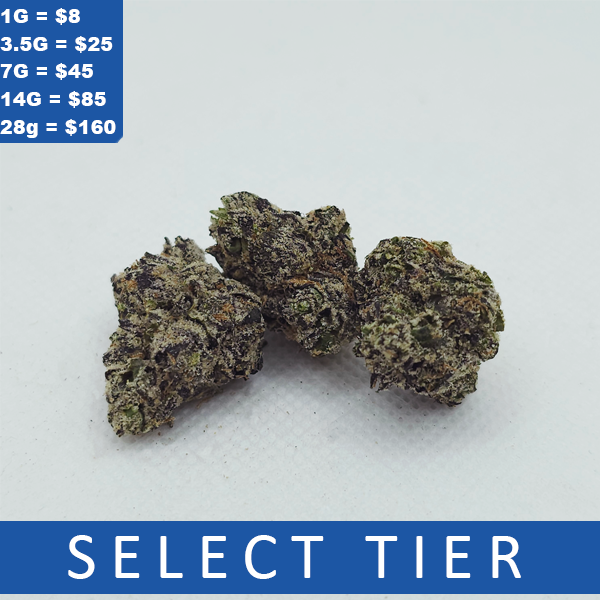Disclaimer: The FDA has not approved cannabis as a medical treatment, cure or product for any illnesses, diseases, etc.. This article is purely speculative and should not be taken as medical advice. Please consult your healthcare provider for information and treatment options.
Everyone has pain, and for individuals with chronic pain issues, getting reliable treatment can be a difficult task. Conventional therapies, such non-steroidal anti-inflammatory medications (NSAIDs) and opioids, have their own dangers and drawbacks. Cannabis is one of the numerous different methods that people are using to treat their pain as a result. The potential of cannabis as a tool for pain treatment will be discussed in this article, along with its numerous components, the science underlying its effects, and the factors to be taken into account for safe and responsible usage.
Comprehending Pain
It’s important to comprehend the nature of pain before exploring cannabis’s potential function in pain management. The perception of pain is multifaceted and subjective, arising from a range of circumstances such as physical harm, inflammation, illness, or even psychological strain. It acts as a safeguard, warning the body of possible danger and triggering the necessary reactions.
Two primary categories may be used to categorize pain:
- Acute Pain: This kind of pain usually hits hard and is connected to a particular medical condition, accident, or surgery. Acute discomfort is often transient and should be taken seriously as a warning indicator.
- Chronic Pain: This type of pain lasts for a long time; usually, it does so for three months or longer. It may be brought on by ailments such as neuropathy, fibromyalgia, arthritis, or even injuries sustained in the past. A person’s quality of life can be greatly impacted by chronic pain, which may need long-term care.
Conventional Methods of Pain Management
Pain treatment has historically involved the use of a variety of drugs, such as NSAIDs, opioids, and other medicines. Although these therapies have the potential to reduce pain, they may also include some dangers and downsides, including:
- Opioid Epidemic: Although extremely helpful in treating extreme pain, opioid drugs have been linked to a serious public health emergency because of the risk of addiction and overdosing.
- Side consequences: When used for an extended period of time, NSAIDs and other painkillers may have adverse consequences include gastrointestinal distress, liver damage, and renal difficulties.
- Tolerance and Dependency: The body may get tolerant to painkillers over time, needing larger dosages to produce the same degree of relief. This can result in dependency.
- Limited Efficacy: Not everyone will benefit from painkillers to the same extent, and some people may still have breakthrough pain despite therapy.
Many people are investigating alternate pain treatment techniques, such as the usage of cannabis, due to the drawbacks and hazards connected with conventional procedures.
Pain and Cannabis: The Science
Marijuana, or cannabis, is a plant that is widely used. It has a complex variety of chemicals, of which over 100 have been found. Tetrahydrocannabinol (THC) and cannabidiol (CBD) are the two most well-known and researched cannabinoids. These substances have an effect on the body’s endocannabinoid system (ECS), a system of neurotransmitters and receptors that is essential for controlling a number of physiological processes, including the feeling of pain.
- THC: The main psychoactive ingredient in cannabis, THC is what gives users of marijuana a “high” or euphoric feeling. By attaching to CB1 receptors, which are mostly located in the brain and central nervous system, it communicates with the ECS. Changes in mood regulation and pain perception may result from this relationship.
- CBD: Not psychoactive like THC, CBD doesn’t make you feel euphoric. Through indirect interactions with several receptors and pathways involved in pain modulation, inflammation reduction, and anxiety control, CBD affects the ECS.
Studies Concerning Cannabis and Pain
Anecdotal anecdotes and a plethora of research indicate that cannabis may provide relief from acute and chronic pain issues. Important conclusions from studies on cannabis and pain relief include:
- Neuropathic Pain: Often brought on by nerve injury, neuropathic pain has been demonstrated to be amenable to cannabis treatment. According to a research in the journal discomfort Medicine, cannabis use significantly reduced the level of discomfort for people with neuropathic pain.
- Arthritis Pain: Arthritis is a disorder that causes inflammation in the joints and can cause persistent pain. According to a 2016 research that was published in the European Journal of Pain, those with osteoarthritis who received topical CBD therapy reported less pain and better sleep.
- Cancer Pain: THC, in particular, has been shown in certain studies to help reduce cancer-related pain and enhance overall quality of life. Cancer patients frequently endure excruciating agony.
- Fibromyalgia: Widespread musculoskeletal pain is a hallmark of this chronic pain condition. According to a research published in the Journal of Clinical Rheumatology, people with fibromyalgia who consume cannabis report significantly lower levels of pain and stiffness.
- Multiple Sclerosis (MS): Pain and spasms in the muscles are common in MS patients. Studies that were published in the European Journal of Neurology revealed that THC and CBD-based cannabis-based drugs helped MS patients with their pain and muscular spasms.
Obstacles and Things to Think About
Cannabis may help with pain management, but there are a number of obstacles and factors to take into account.
- Legal Status: There are significant regional and national differences in the legal status of cannabis. Following local laws and being informed of the legal system in your region are crucial.
- Individual Response: Each person will experience cannabis in a different way. What suits one person could not suit another. It is essential to begin with small dosages and pay close attention to your response.
- Adverse Effects: Using cannabis, especially high-THC products, can have adverse effects such as dry mouth, dizziness, poor coordination, and cognitive impairment.
- Drug Interactions: Cannabis and other drugs may interact, perhaps impairing their effectiveness or leading to unfavorable side effects. If you use additional drugs, speak with a healthcare provider.
- Quality and Safety: Cannabis products can differ greatly in terms of both quality and safety, particularly in uncontrolled marketplaces. Buying cannabis from reliable vendors is advised, and you should think about having it tested by a third party to ensure purity and strength.
- Psychoactive Effects: Cannabis products with a high THC content may have psychoactive effects that are not appropriate for everyone, especially for people who have experienced anxiety or psychosis in the past.
- Dependency Risk: Cannabis has a little higher risk of physical dependency than opioids, yet it still exists. To reduce this danger, moderation and responsible use are crucial.
Research and discussion on cannabis’s ability to aid in pain treatment are still continuing. Although there is mounting research that suggests cannabis may help with a range of pain issues, there are a few things to bear in mind since individual reactions might differ greatly.
Cannabis provides a variety of possibilities for pain relief due to its broad cannabinoid composition. goods that are CBD-dominant may provide relief for certain people since they don’t have any intoxicating effects, while goods that include THC may help others by alleviating pain.
In the end, deciding whether to investigate cannabis as a pain management alternative should be decided after consulting with a medical expert and taking into account the patient’s unique circumstances, applicable laws, and any dangers and benefits. Cannabis may be a useful addition to the toolkit for pain management if it is used responsibly and with knowledge.
Title: Does Cannabis Aid in the Treatment of Pain?
First Off
The possibility of using cannabis to treat pain has drawn more attention in recent years. It’s now easier than ever to obtain cannabis for medical purposes thanks to the growth of dispensaries around the country, including in Oklahoma City (OKC), Stillwater, and Edmond. This post will discuss the benefits of using cannabis for pain relief, the connection between cannabis and pain management, and how to locate the closest dispensary—which may even have a drive-thru—in your area.
Cannabis and the Treatment of Pain
Millions of people worldwide suffer with pain, a complicated and frequently incapacitating ailment. Medication on prescription, physical therapy, and other therapies are examples of traditional pain management techniques. Cannabis is one of the alternate methods that some people use to obtain relief.
Numerous chemicals included in cannabis, known as cannabinoids, interact with the body’s endocannabinoid system. Tetrahydrocannabinol (THC) and cannabidiol (CBD) are the two most well-known of these cannabinoids. These two substances have both demonstrated promise in reducing different kinds of pain.
- THC and Pain Relief: THC, the psychoactive part of cannabis, is mostly in charge of producing the “high” that comes from using marijuana. It has been shown to have analgesic qualities that can aid in the management of pain, making it a desirable choice for people looking for treatment from ailments including neuropathic pain, cancer-related pain, and chronic pain.
- CBD and Pain Management: Unlike other cannabis products, CBD is not psychoactive and does not result in a “high.” Its ability to lessen pain and inflammation without having the euphoric effects of THC has drawn interest. Muscle stiffness, migraines, and arthritis are among the ailments that CBD is frequently used to treat.
Cannabis’s Beneficial Effects on Pain Management
- Diverse Selection: Products from cannabis shops are tailored to meet the needs and tastes of each customer. There is probably a cannabis product out there that can bring you the relief you need, regardless of whether you want to smoke, vape, or use edibles. Because of this variety, patients may select the approach that best addresses their unique pain situation.
- Adjustable Dosage: Having the option to alter your dosage is a big benefit of utilizing cannabis to treat pain. Dispensaries provide goods with a range of THC and CBD concentrations, so customers may try out different dosages until they discover the one that works best for them. Pain treatment that is more individualized and effective may result from this exact dosage.
- Decreased Risk of Opioid Dependency: The American opioid epidemic has highlighted the need for non-opioid pain relief techniques. Some people are using cannabis to lessen their dependency on opioid prescriptions, which have a number of possible negative effects and may be extremely addictive. Cannabis offers a pain treatment option without the risks of opioids thanks to its possible decreased risk of addiction.
- Targeted Pain Relief: Certain forms of pain can be specifically relieved by cannabis. For instance, cannabis may be able to reduce neuropathic pain sensations more well than other prescription drugs. Many patients’ quality of life can be enhanced by this focused approach, which can improve overall pain treatment tactics.
Locating the Best Local Dispensary
When thinking about using cannabis to treat pain, it’s important to locate a reliable dispensary with experienced personnel and high-quality products. Whether you live in Oklahoma City, Stillwater, Edmond, or anywhere else, the following advice will help you locate the greatest dispensary nearby:
- Research Online: To begin, look out local dispensaries on the internet. Information about the goods and services that various dispensaries offer may frequently be found on websites, directories, and review platforms. Seek out dispensaries that have a solid reputation and good ratings.
- Verify Licensing: Make sure the dispensary you select has a license and complies with all applicable state laws. Both your safety and the caliber of the goods you buy depend on this.
- Speak with Your Healthcare physician: Get advice from your healthcare physician before using medicinal marijuana to treat pain. They may offer advice on whether cannabis is a good choice for your particular ailment and suggest shops that meet your medical requirements.
- Visit the Dispensary: After you’ve made a list of your top choices, go in person to the dispensaries. Examine the facility’s cleanliness, the staff’s level of professionalism, and the selection of items offered. Inquire about their choices and their familiarity with various items and strains.
- Take Convenience Into Account: If you value convenience, search for cannabis shops that have drive-thru options. You may save time and have a more private experience with this option.
Dispensaries offering drive-through services
In response to patient and consumer demands, several dispensaries are now providing drive-thru services as the cannabis business continues to develop. With this easy alternative, you may buy your cannabis items while still being cozy in your car. Use relevant phrases such as “drive-thru dispensary” or “dispensary with a drive-thru” in your web search to locate dispensaries that provide this service if you’re seeking for one.
Top Dispensary Offers
Dispensaries frequently give different promotions and discounts to draw clients and honor steadfastness. Try using these suggestions to locate the greatest dispensary offers in your area:
- Enroll in Loyalty Programs: A lot of dispensaries allow their regular clients access to loyalty programs that provide discounts and special offers. Enroll in these programs to get the most out of your savings.
- Follow Dispensaries on Social Media: Dispensaries often use their social media accounts to advertise sales and other promotions. Stay up to speed on their latest promotions by following them.
- Sign Up for Newsletters: To get information about forthcoming sales and discounts sent straight to your inbox, sign up for the newsletters from the dispensaries you favor.
- Examine Online Deal Platforms: Apps and websites devoted to cannabis sales sometimes compile discounts from different shops. Look through these sites to discover the greatest offers around.
Cannabis has proven to be a promising alternative for treating pain, and it’s getting easier to get medical marijuana with the opening of additional dispensaries in cities like Edmond, Stillwater, and Oklahoma City. For people looking for an alternate method of controlling chronic pain, cannabis offers a number of advantages over opioids, such as a wide range of product alternatives, customized dose, and lower risks.
It’s important to conduct thorough research, speak with medical specialists, and confirm that the selected dispensary satisfies your unique needs and requirements while looking for the finest dispensary in your area, regardless of whether you need a drive-thru option or are looking for the greatest rates. With the correct knowledge and a reliable dispensary, you may take advantage of a secure and reliable method of pain treatment while exploring the possible advantages of cannabis for pain management.







